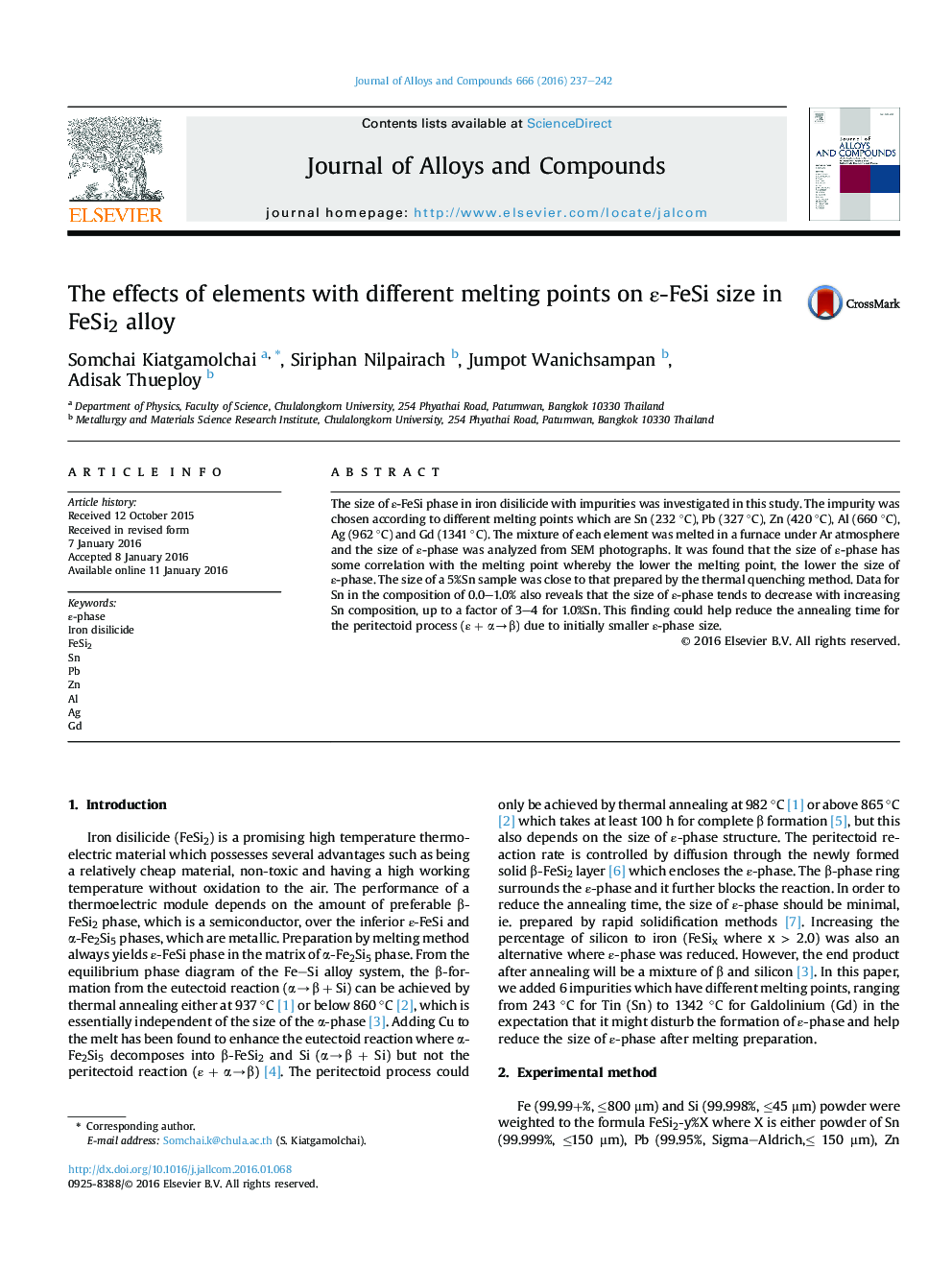| Article ID | Journal | Published Year | Pages | File Type |
|---|---|---|---|---|
| 1606439 | Journal of Alloys and Compounds | 2016 | 6 Pages |
•Size of epsilon-phase (FeSi) in FeSi2 alloy can be reduced by adding impurities to the alloy.•The lower the melting point of impurity added, the smaller the size of epsilon-phase is.•Sn is the lowest melting point we used. Adding more Sn produced smaller size as well.
The size of ε-FeSi phase in iron disilicide with impurities was investigated in this study. The impurity was chosen according to different melting points which are Sn (232 °C), Pb (327 °C), Zn (420 °C), Al (660 °C), Ag (962 °C) and Gd (1341 °C). The mixture of each element was melted in a furnace under Ar atmosphere and the size of ε-phase was analyzed from SEM photographs. It was found that the size of ε-phase has some correlation with the melting point whereby the lower the melting point, the lower the size of ε-phase. The size of a 5%Sn sample was close to that prepared by the thermal quenching method. Data for Sn in the composition of 0.0–1.0% also reveals that the size of ε-phase tends to decrease with increasing Sn composition, up to a factor of 3–4 for 1.0%Sn. This finding could help reduce the annealing time for the peritectoid process (ε + α→β) due to initially smaller ε-phase size.
